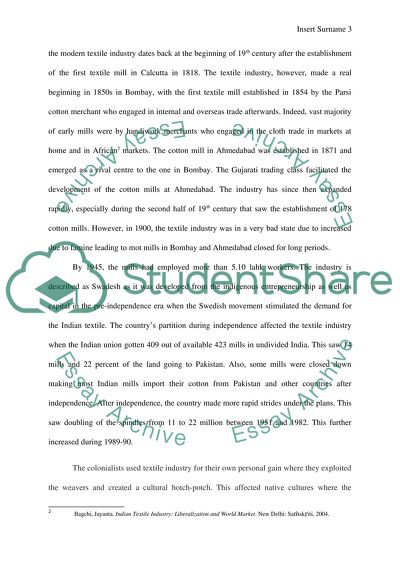How does the history of India's textile industries reflect the growth Term Paper. Retrieved from https://studentshare.org/history/1492884-how-does-the-history-of-india-s-textile-industries
How Does the History of India'S Textile Industries Reflect the Growth Term Paper. https://studentshare.org/history/1492884-how-does-the-history-of-india-s-textile-industries.


